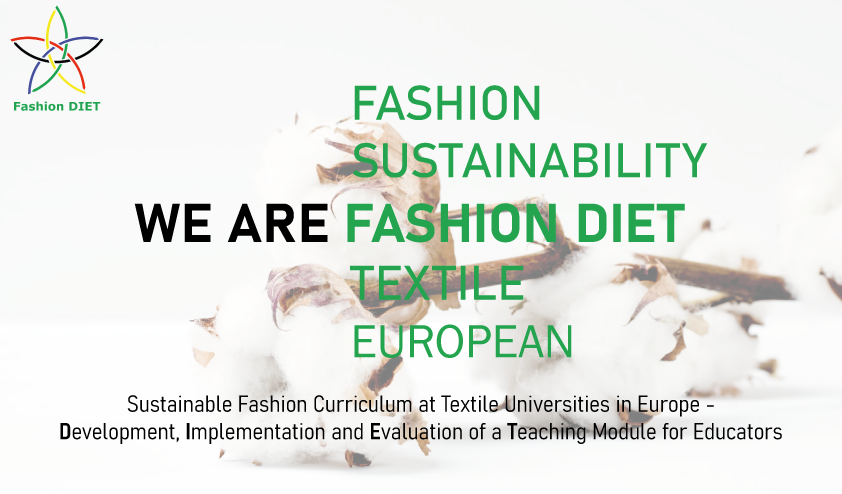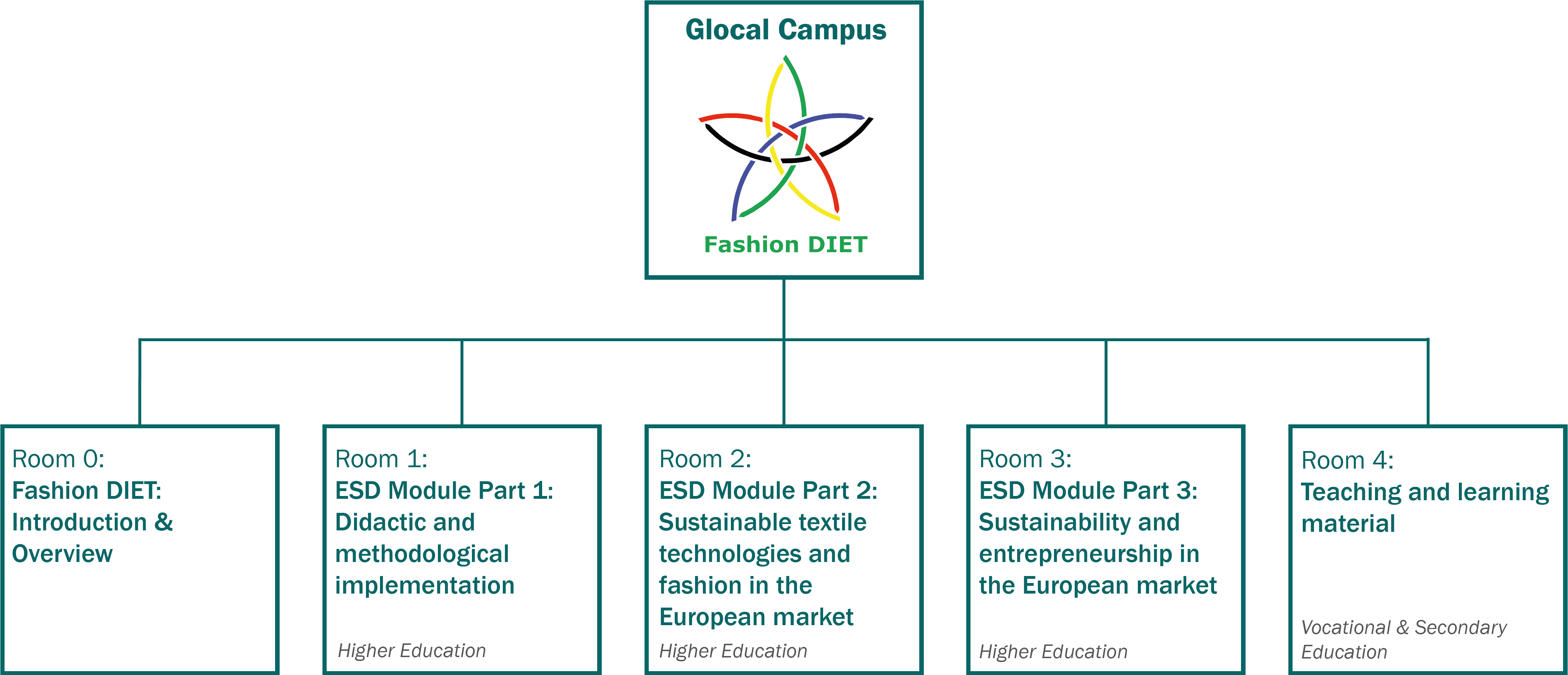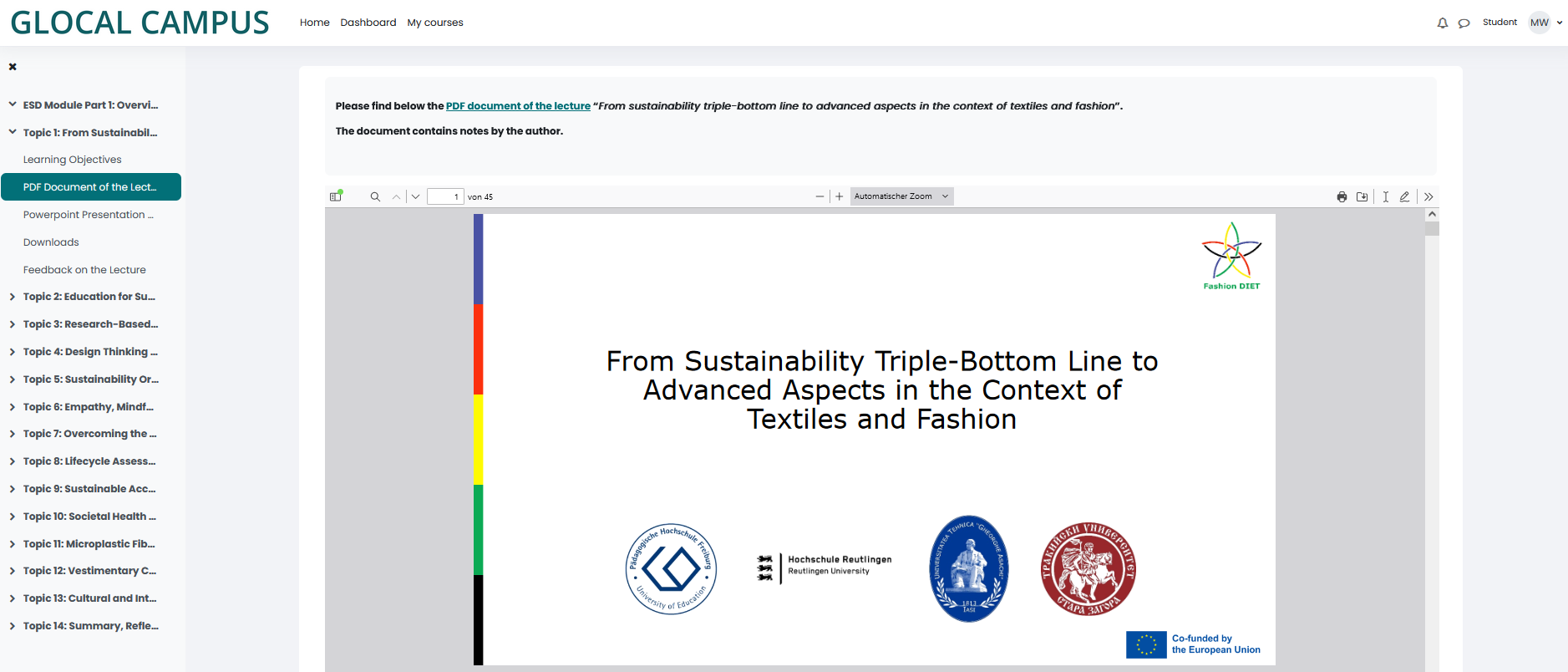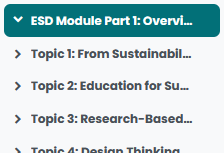Topic outline
-

Fashion is a global business with global supply chains and the fashion industry an extremely energy-consuming, polluting and wasteful system. Fast fashion has accelerated the traditional business model in the fashion industry, encouraging people to buy more clothes by offering low prices and increasing the number of new seasons per year. Along with this growth in consumption comes a growth in ecological and social impact during the whole textile chain.
Globalisation is also placing strong competitive pressure on the European textile and fashion industry. Concerning the request to decrease its environmental impact, the European strategy for the textile and fashion sector emphasizes sustainable textiles and fashion with an increased benefit by innovation and ecological design. This multidisciplinary field requires extensive new knowledge, taking also into consideration that fashion and textile is one of the most dynamic consumer markets in terms of competitive development.
A strong demand for sustainability in the textile and fashion industry and its global market imposes a continuous implementation of the guiding principle Education for Sustainable Development (ESD) in education and industry. The Fashion DIET project envisages the development of new tools for improving key competences of lecturers, teachers, trainers, students and young textile specialists.
Key Facts and Figures
- Acronym: Fashion DIET
- Programme: Erasmus+
- Project Duration:
- Start: 01-09-2020
- End: 30-08-2023
- Project Reference: 2020-1-DE01-KA203-005657
- Cooperation: International and interdisciplinary universities
- Gheorghe Asachi Technical University of Iaşi, Romania, Faculty of Industrial Design & Business Management
- Reutlingen University of Applied Sciences, Germany, Faculty Textile & Design
- Trakia University Stara Zagora, Bulgaria, Faculty of Technics and Technologies
- University of Education Freiburg, Germany, Department Fashion and Textile (lead organisation)
- Gheorghe Asachi Technical University of Iaşi, Romania, Faculty of Industrial Design & Business Management

Topics
-
The Fashion DIET area on the Glocal Campus e-learning platform is divided into the following course rooms:
 If you are a lecturer and looking for Higher Education, please go to the following course rooms:If you are a teacher and looking for Vocational and Secondary Education, please go to the following course room:
If you are a lecturer and looking for Higher Education, please go to the following course rooms:If you are a teacher and looking for Vocational and Secondary Education, please go to the following course room: -
The manual of the Fashion DIET project provides an overview of all 42 teaching units of the ESD module. In the preface, the importance of the ESD module is emphasised, followed by an introduction to the module with a focus on the importance of ESD in the context of fashion and textiles and the objectives of the project. After a presentation of the structure and the various topics of the ESD module, the teaching and learning materials for schools are introduced, which in turn are thematically based on the teaching units of the ESD module. The manual concludes with the project-related publications.
-
Here you can download the Fashion DIET Manual in the respective languages of the project partners:
-
You can find an overview of all course rooms of the Fashion DIET project under "my courses".

Each course room has a navigation bar on the left side with all the topics of the respective course.
If you click on one of the topics, the corresponding page will be displayed on the right-hand side.

Navigation through the course rooms of the ESD modules
The three Course Rooms of the ESD Module (Room 1. / 2. / 3.) are each divided into the topic "Overview" and 14 lectures. You can find the 14 lectures on the left side in the navigation bar as well as in the topic "ESD Module Part 1/2/3: Overview".

Once you have decided on a lecture, click on the topic of the lecture on the navigation bar on the left or on the name of the topic in the overview and you will be led to the corresponding area.
In the lecture section, you will find an overview of the topic written by the author on the start page.
Each lecture is divided into the following five areas:
- Learning Objectives of the Lecture
- PDF Document of the Lecture
- Powerpoint Presentation of the Lecture
- Downloads
- Feedback on the Lecture
You have the following two options to access the sub-areas:1. One option is to go to the Table of Contents on the start page below the Lecture Overview:Each topic of the table of contents has a hyperlink behind it that will led you to the different topics of that lecture area.
2. The other way to get to the sub-areas is via the navigation bar on the left below each topic the sub-areas are listed.
Please click on the title of the sub-area of your choice to display the content.
To go to the next content, click on "next activity" in the bottom right corner.
To return to the start page of a session from within a section, click on the lecture topic via the green navigation bar on the left.
- Learning Objectives of the Lecture